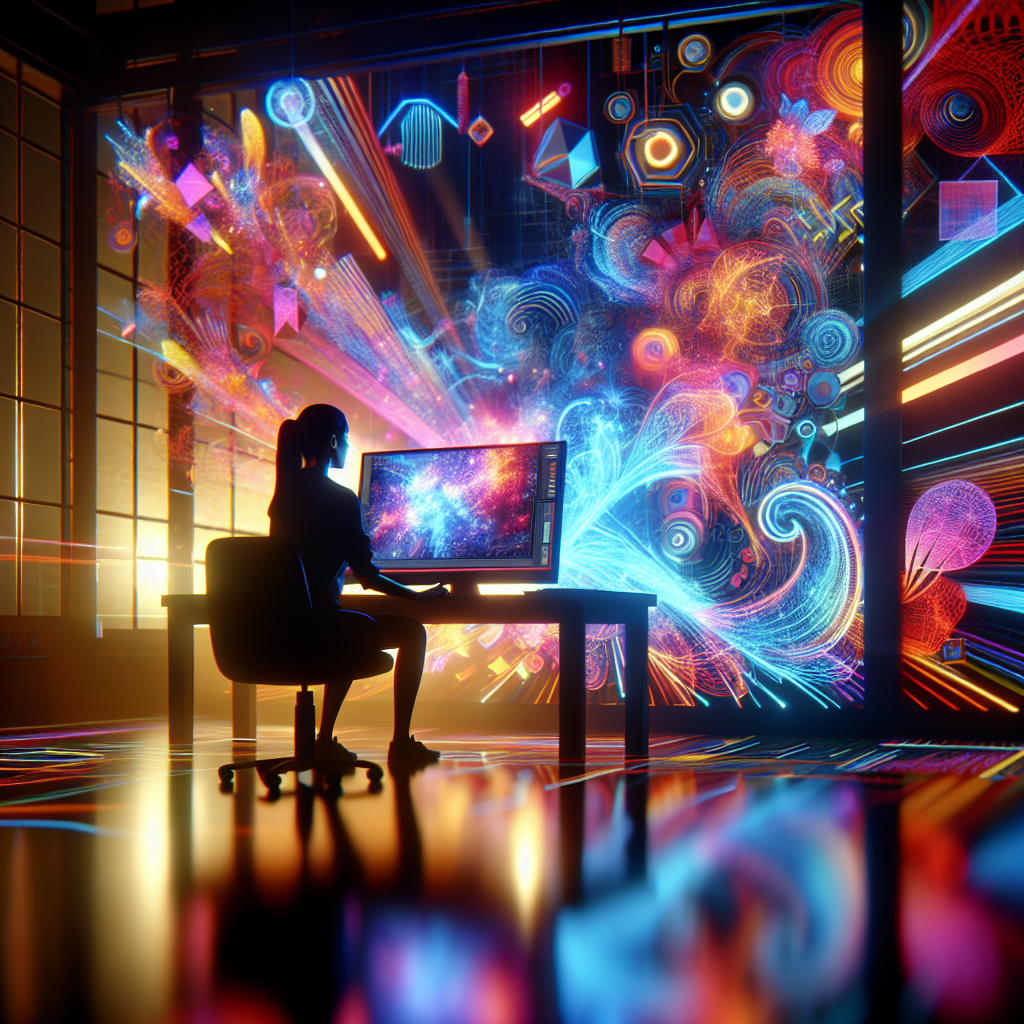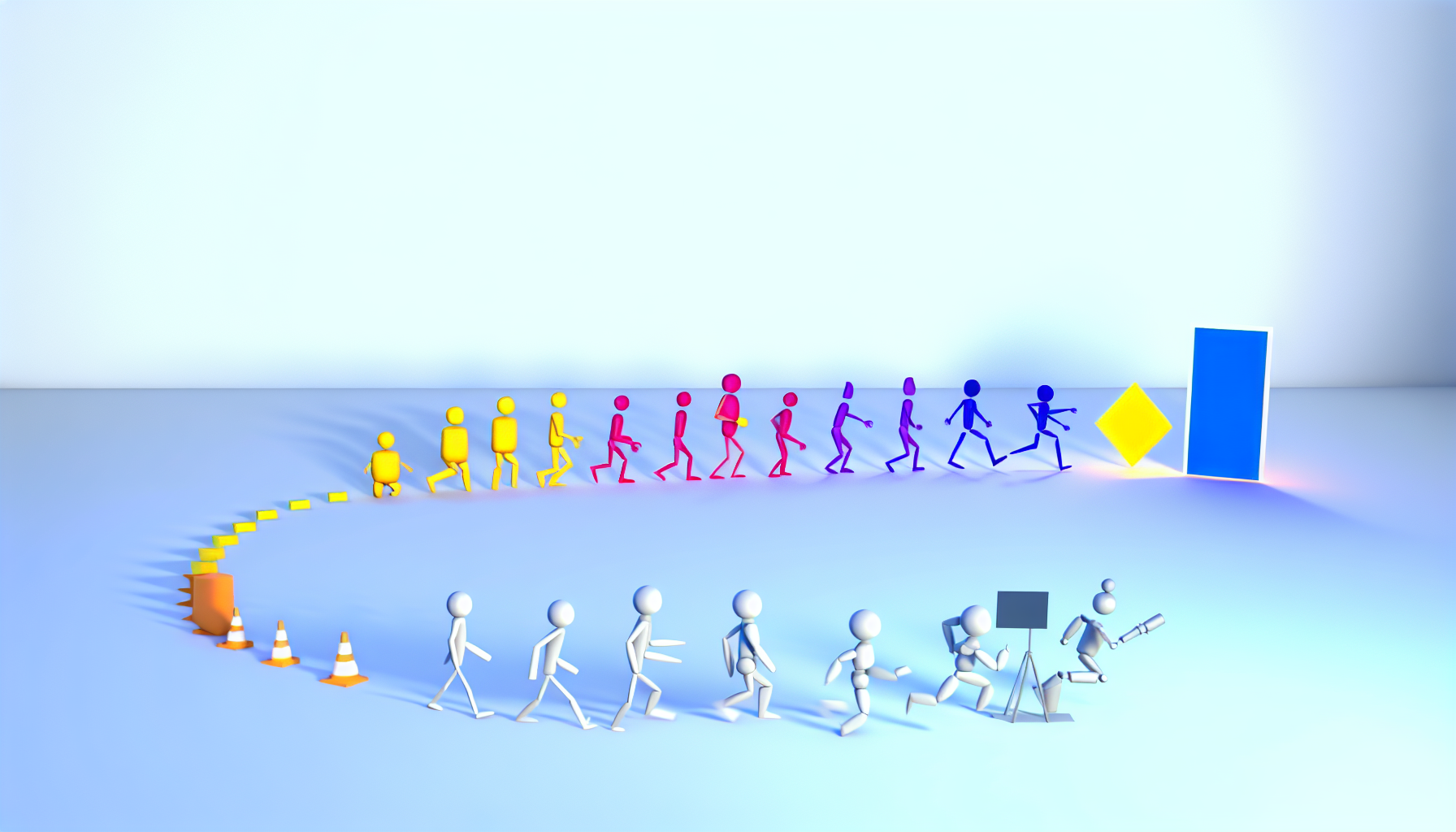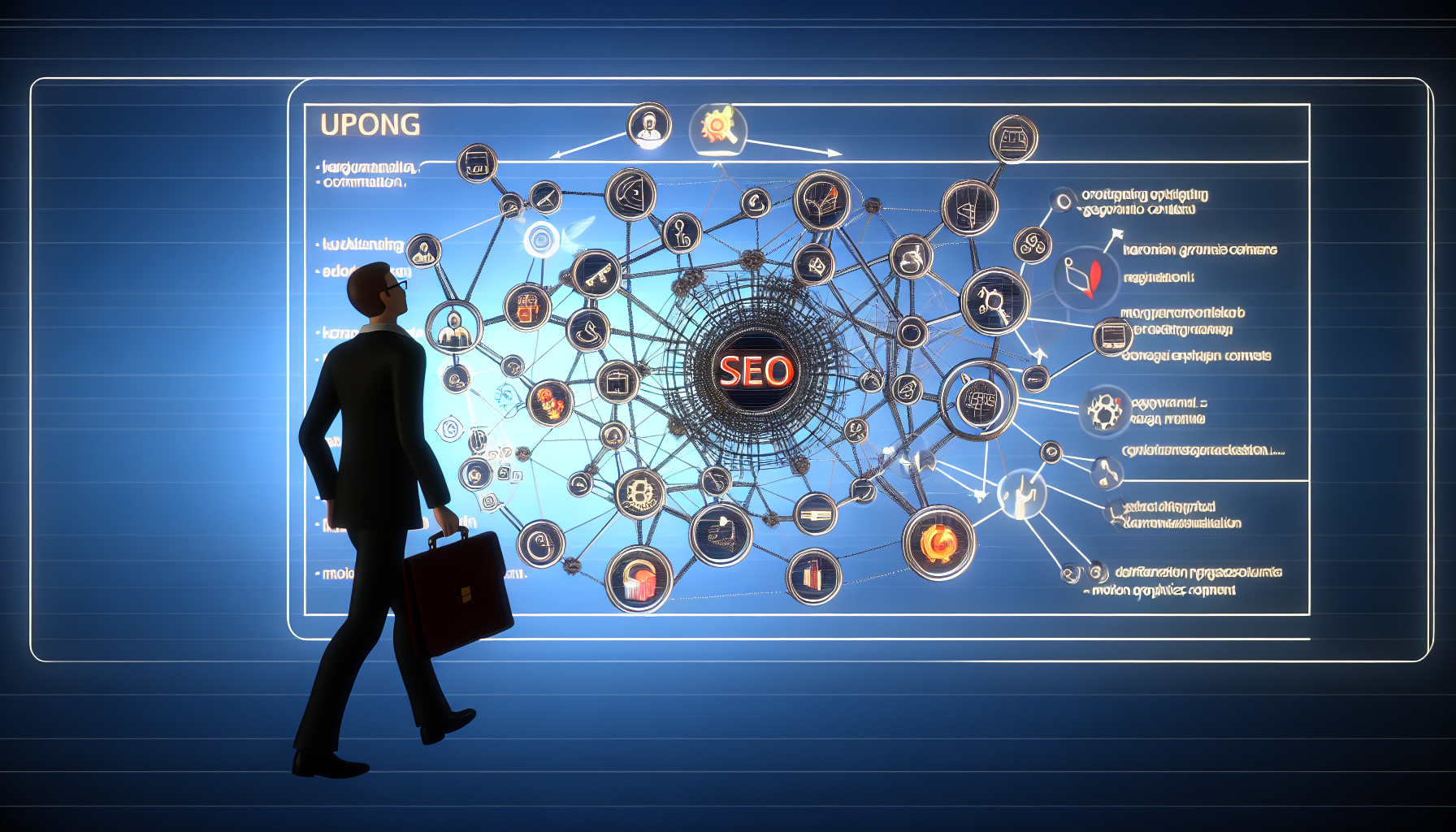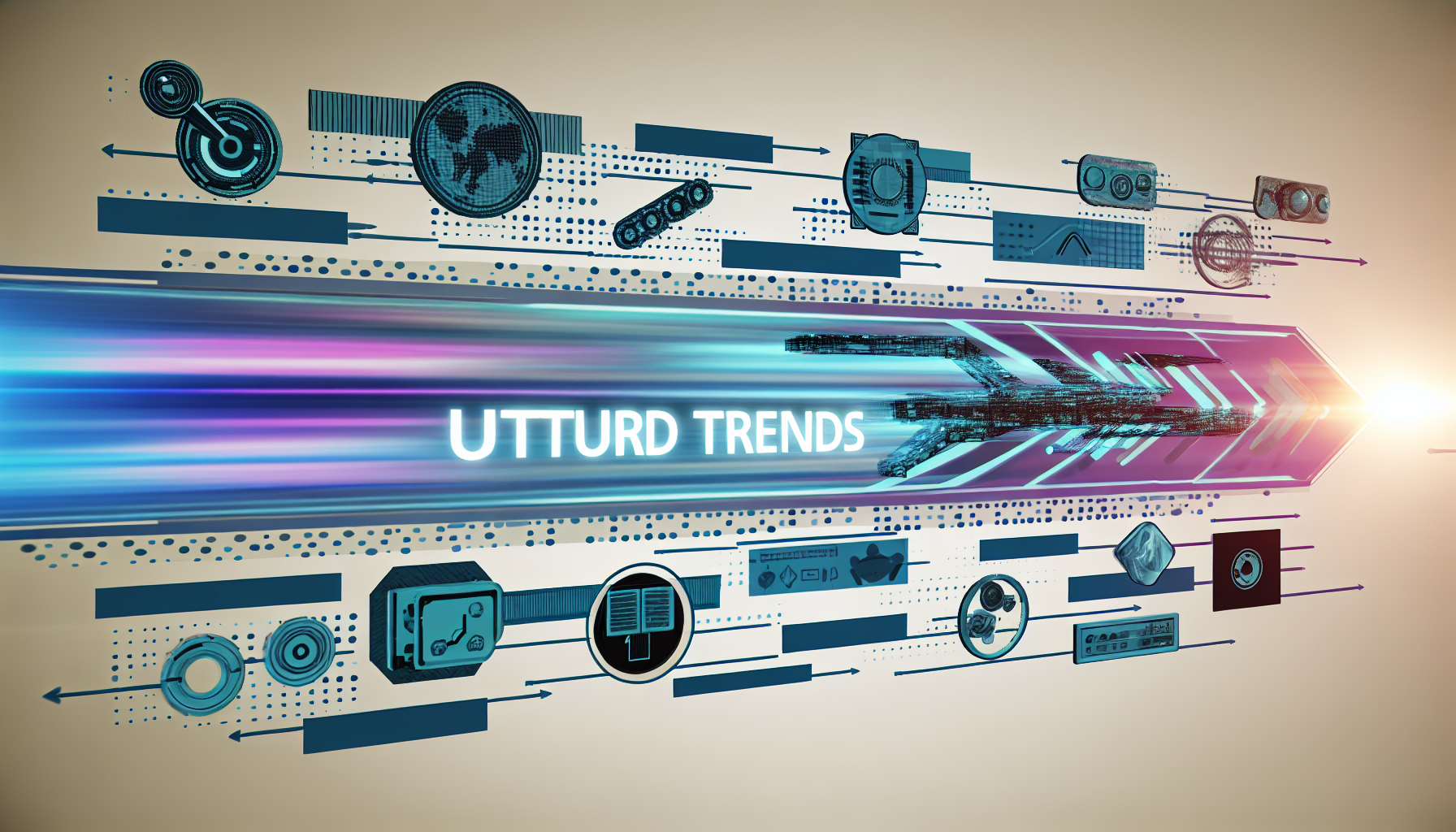Discover the fundamental principles of motion graphics and learn how to breathe life into your designs through captivating animation techniques.

Motion graphics refer to pieces of digital footage or animation that create the illusion of motion or rotation and are used in a variety of multimedia contexts.
This field intersects with graphic design, but it significantly differs from traditional static design in that it incorporates time as a critical element. While static designs—like posters or brochures—are typically limited to visual static elements, motion graphics bring these elements to life, thereby delivering a richer experience. Through animations, transitions, and effects, motion graphics engage viewers in ways that static designs cannot, using movement to convey messages more dynamically.
The importance of motion graphics in modern media cannot be overstated. In advertising, motion graphics allow brands to create captivating content that stands out in digital spaces crowded with information. They facilitate storytelling by conveying concepts in a concise and visually engaging manner, making it easier for audiences to absorb complex messages. In social media, where attention spans are brief, animated graphics can grab eyes quickly, effectively communicating ideas that might otherwise be lost in traditional formats. Furthermore, platforms such as Instagram and TikTok thrive on visual appeal, allowing motion graphics to become essential tools for content creators aiming to connect with their audience.
In the realm of film and television, motion graphics play a crucial role in enhancing narratives. From title sequences to animated infographics, they provide context, establish tone, and engage audiences on a deeper emotional level. The ability to combine animation with design elements enables filmmakers and advertisers to capture stories and communicate ideas in ways that resonate with viewers long after they have seen the content. Thus, motion graphics serve as an integral component of visual storytelling, paving the way for innovative approaches in creative media.

The journey of motion graphics is a fascinating one, intricately woven into the broader tapestry of animation history. This field began its evolution long before the digital age, with roots tracing back to early 20th century animation techniques. Iconic figures such as Winsor McCay pioneered animation through hand-drawn techniques, introducing concepts that would eventually coalesce into what we now recognize as motion graphics. His groundbreaking work, “Gertie the Dinosaur,” showcased not only the imaginative potential of animation but also laid the groundwork for storytelling through movement.
As the years progressed, technological advancements began to shape the landscape of motion graphics profoundly. The introduction of the motion picture camera in the late 1800s offered a new platform for animators, allowing for the capture of sequential images that produced the illusion of movement. The mid-20th century saw the rise of television, presenting further opportunities for motion graphics to flourish. Designers utilized animated titles and segments, bringing a new dimension to broadcasting, and sparking creativity in the industry.
The 1980s marked a watershed moment with the advent of computer graphics. Software like Adobe After Effects transformed the way designers approached motion graphics, enabling them to explore three-dimensional spaces and manipulate elements with unparalleled ease. This digital revolution unlocked extensive possibilities, granting artists the capability to merge live-action footage with animation seamlessly. Furthermore, influential figures such as John Whitney and Saul Bass made significant contributions during this period, pushing boundaries and inspiring future generations.
In recent decades, motion graphics have become increasingly sophisticated, benefiting from advancements in technology such as virtual reality and augmented reality. The integration of these technologies is shaping the future of motion graphics, allowing for more immersive experiences. As designers adapt to new tools and techniques, the art of motion graphics continues to evolve, emphasizing the dynamic interplay between creativity and technology.
Motion graphics have become increasingly accessible due to a variety of powerful software tools available in the market today. Among the most popular options, Adobe After Effects stands out as an industry standard, renowned for its extensive capabilities in creating complex animations and visual effects. It offers a plethora of features, such as keyframing, compositing, and a vast library of plugins that enhance its functionality. While it can be intimidating for beginners due to its steep learning curve, the wealth of online tutorials and resources make it manageable for aspiring motion graphic artists.
Another noteworthy tool is Blender, which is open-source and completely free to use. This software excels in both 2D and 3D animation, enabling creators to build intricate models and engage in robust simulations. Blender’s strong community support facilitates the learning process, making it an attractive option for beginners and mid-level designers. Its versatility accommodates a range of projects, from simple animations to complex cinematic sequences.
Cinema 4D is another prominent player in the motion graphics landscape. Its user-friendly interface and integration with Adobe products make it a go-to choice for designers looking to create high-quality 3D animations. Cinema 4D is celebrated for its motion graphics capabilities, particularly through its MoGraph toolset, which simplifies the animation process and allows for easy manipulation of objects. This makes it particularly appealing to professionals in the industry who require efficiency paired with high-quality output.
For beginners seeking alternatives, other software options like Adobe Spark and Animaker offer user-friendly interfaces that allow for basic animation creation without extensive training. Mid-level creators might explore tools like HitFilm Express, which provides an effective blend of editing and visual effects capabilities. Each of these tools caters to varying skill levels and project requirements, ensuring there is a solution for every aspiring motion graphics designer.
Understanding the core principles of animation is essential for every motion graphics designer aiming to create fluid and engaging visuals. The fundamental principles established by pioneers in the industry serve as the backbone for effective animation. Key concepts such as timing, spacing, easing, and the utilization of keyframes are paramount.
Timing refers to the duration between keyframes and directly influences the speed and rhythm of an animation. For example, an object that changes position in a short time will appear fast-moving, while a long duration between movements renders a slower, more deliberate pace. This variance in timing can dramatically alter how the audience perceives an animation’s action and emotion.
Spacing is equally important, as it dictates the distance covered by an object between frames. An example of effective spacing might be a bouncing ball; the ball moves slower at the peak of its bounce and faster as it approaches the ground. This shift in spacing mimics real-world physics, making animations appear more natural and relatable.
Easing refers to the gradual transition of an object’s speed and can be categorized into easing in, easing out, or both. Easing in creates a smooth start to a movement, while easing out provides a gentle slowing at the end of an action. For instance, if a character reaches for an object, easing in will make their hand approach slowly, creating anticipation, while easing out will soften the halt, enhancing realism.
Keyframes are markers that define the beginning and end points of any smooth transition in an animation. The strategic placement of keyframes controls movement and transformation, and the in-between frames are known as “in-betweens,” contributing to the overall fluidity. A well-planned sequence of keyframes ensures that the motion graphics are engaging and visually cohesive.
By mastering these fundamental principles, motion graphics designers can effectively bring their designs to life, creating captivating animations that resonate with viewers.
Creating effective motion graphics involves a thoughtful approach to design that enhances visual storytelling and evolves the viewer’s experience. To achieve maximum impact, designers should prioritize key elements such as contrast, color theory, typography, and composition, each of which plays an integral role in the effectiveness of animated visuals.
Contrast is essential in motion graphics as it helps to delineate different elements, ensuring clarity and focus. High contrasting colors can guide viewers’ attention to crucial parts of the animation, while lower contrast may create subtle transitions, enhancing the storytelling aspect. It is advisable to choose color palettes wisely; colors should complement each other while fostering emotional connections. For instance, warm colors can evoke energy, while cool tones may suggest calmness, thereby influencing the audience’s perception of the animation.
Another vital component is typography. Selecting typefaces that are legible and fit the mood of the content is crucial. Motion typography is especially effective when animated thoughtfully, ensuring that the text dances in rhythm with the narrative. Designers must be cautious to avoid overly complicated fonts that become illegible when animated. Additionally, considering the timing of text emergence can further emphasize messages and emotional beats within the animation.
Composition serves as the backbone of any design, setting the stage for how the motion elements will interact. A well-structured layout will not only captivate viewers’ attention but also guide them through the storyline seamlessly. Before diving into animation, planning is paramount. Storyboarding the entire sequence can help organize thoughts, establish pacing, and clarify transitions between different scenes, ensuring a coherent flow throughout the motion graphics project. By integrating these best practices, designers will position their animations to effectively convey messages and engage audiences.
In the realm of motion graphics, sound plays a crucial role in elevating animated designs from static visuals to engaging narratives. The combination of audio elements with motion graphics can elicit emotions, guide viewer focus, and enhance the overall storytelling experience. Therefore, the careful selection of audio effects, background music, and voiceovers is essential for producing impactful animations.
To begin with, choosing the right background music is vital. The chosen track should not only complement the visual style but also fit the intended mood of the animation. For example, a serene animation may benefit from soft, melodic tunes, whereas dynamic graphics may require an upbeat, energetic soundtrack. It’s important to consider the pacing of the graphics to ensure that the rhythm of the music syncs with visual transitions and key moments in the animation.
In addition to background music, incorporating sound effects can significantly enhance the viewer’s experience. These effects serve to emphasize actions depicted on screen, thus creating an immersive environment. For instance, adding whooshing sounds to transitions can amplify movement, while subtle ambient sounds can add depth to scenes. Selecting sound effects that align with the visuals is paramount, as mismatched audio can divert attention rather than enhance it.
Voiceovers are another instrumental component of motion graphics. They can guide viewers through the storyline or provide necessary context to the animation. When integrating voiceovers, it is imperative to ensure that the tone and pacing align with the animation style. Additionally, maintaining a balance between the voiceover and background music is essential to avoid overwhelming the audience. Carefully adjusting volume levels and timing can create a cohesive experience that captivates the viewer.
Finally, syncing audio with visuals is a key aspect of crafting effective motion graphics. This necessitates meticulous attention to detail, where audio cues are aligned perfectly with visual events. For optimal engagement, creators should consider using editing software that allows for precise timing adjustments. By mapping out critical visual moments and aligning audio effects accordingly, the impact of the animation can be maximized, resulting in a more memorable experience for the audience.

In the digital landscape, the significance of Search Engine Optimization (SEO) for motion graphics content cannot be overstated. As visual media becomes increasingly popular, optimizing these graphics for search engines is essential to enhance visibility and drive traffic. Effective SEO strategies focus not only on keyword integration but also on structuring content in a manner that improves indexing and discoverability.
One of the foundational elements of SEO for motion graphics is comprehensive keyword research. By identifying relevant keywords and phrases that potential viewers are likely to use, creators can tailor their content to meet audience needs. Tools such as Google Keyword Planner, SEMrush, and Ahrefs can assist in discovering high-ranking keywords that relate to motion graphics and animation topics. Once identified, these keywords should be integrated naturally into video titles, descriptions, and tags to increase the chances of appearing in search results.
In addition to effective keyword usage, crafting engaging video descriptions is crucial. A well-written description should not only describe the video content but also include primary keywords and other related terms to optimize searchability. For example, if the motion graphic is about “environmental awareness,” including variations like “eco-friendly graphics” or “sustainability animations” can broaden the content’s reach.
Tagging is another vital aspect of SEO for motion graphics on platforms like YouTube. Correctly tagging videos with relevant keywords helps categorize content and connect it with similar videos, enhancing visibility. Additionally, creating captivating thumbnails plays an important role in attracting viewers; thumbnails should not only be visually appealing but also relevant to the video’s content, incorporating appropriate text or imagery that reflects the theme.
Structuring content effectively also helps with SEO. Organizing motion graphics into well-defined playlists can aid in creating a coherent viewing experience while improving search ranking. Ensuring a mobile-friendly design alongside fast loading speeds for motion graphic content also contributes positively to search engine ranking factors. By implementing these strategies, creators can significantly enhance the visibility and reach of their motion graphics content.
Evaluating the success of motion graphics projects after their launch is crucial in understanding their impact and effectiveness. Various metrics can be monitored to gain insights into how well these animated designs are resonating with the target audience. Key performance indicators (KPIs) such as engagement rates, viewer retention, and conversion rates are essential components that can signal the overall effectiveness of motion graphics in achieving set objectives.
Engagement rates offer insight into how viewers interact with the motion graphics content. This can be measured by looking at likes, shares, comments, and overall audience participation. A high engagement rate typically indicates that the audience finds the content interesting and relevant. Viewer retention is another critical metric; it assesses how long viewers consistently watch the animation piece without dropping off. Utilizing video analytics tools can help track when viewers stop watching, revealing specific moments that may need improvement in future projects.
Conversion rates also play a significant role in measuring the effectiveness of motion graphics, especially if the content is used for promotional or marketing purposes. By analyzing the percentage of viewers who took a desired action, such as signing up for a newsletter or making a purchase, creators can establish a direct correlation between their graphic designs and business goals.
To gather analytics and feedback effectively, several tools are available. Platforms like Google Analytics can track user interactions and conversions on a website where motion graphics are displayed. Additionally, social media insights can reveal how well animated content performs across platforms. Surveys and user feedback after viewing can also be essential in understanding the audience’s perception. Employing these measures not only informs the success of current projects but also provides valuable insights for future motion graphics endeavors.

The world of motion graphics is constantly evolving, driven by technological advancements and creative innovation. As we look to the future, several emerging trends are poised to significantly impact the way motion graphics are created and consumed. Notably, technologies such as virtual reality (VR), augmented reality (AR), and artificial intelligence (AI) are at the forefront of this transformation.
Virtual reality offers an immersive experience that engages viewers in an entirely new way. Motion graphics can be designed to interact with users within a 3D space, allowing for a level of storytelling that is currently unattainable in traditional formats. This immersive environment can enhance user engagement, making it a valuable tool for marketers and designers seeking to create compelling narratives.
Augmented reality, on the other hand, layers digital content over the physical world. This technology allows motion graphics to break free from the confines of screens, integrating seamlessly with users’ environments. As AR becomes more accessible through smartphones and smart glasses, designers are finding innovative ways to blend animations with real-world elements. This trend not only enriches user experiences but also opens up a myriad of possibilities for interactive advertising and entertainment.
Artificial intelligence is another key player in the future of motion graphics. AI technologies can analyze data and generate design elements autonomously, streamlining production processes and enhancing creativity. Motion graphics can be personalized to individual preferences, making content more relevant and appealing to viewers. Furthermore, AI-driven tools can predict design trends, empowering designers to stay ahead of market demands.
As these technologies continue to evolve, the landscape of motion graphics will undoubtedly shift, creating new opportunities for creativity and innovation. By embracing these trends and experimenting with these advanced tools, designers can harness the full potential of motion graphics and deliver engaging experiences that resonate with audiences. Staying informed about these developments will be essential for professionals in the motion graphics industry to remain competitive and relevant.
Find Scholarships Offered by Countries Worldwide for Your Academic Goals.
Chose where you want to study, and we will let you know with more updates.